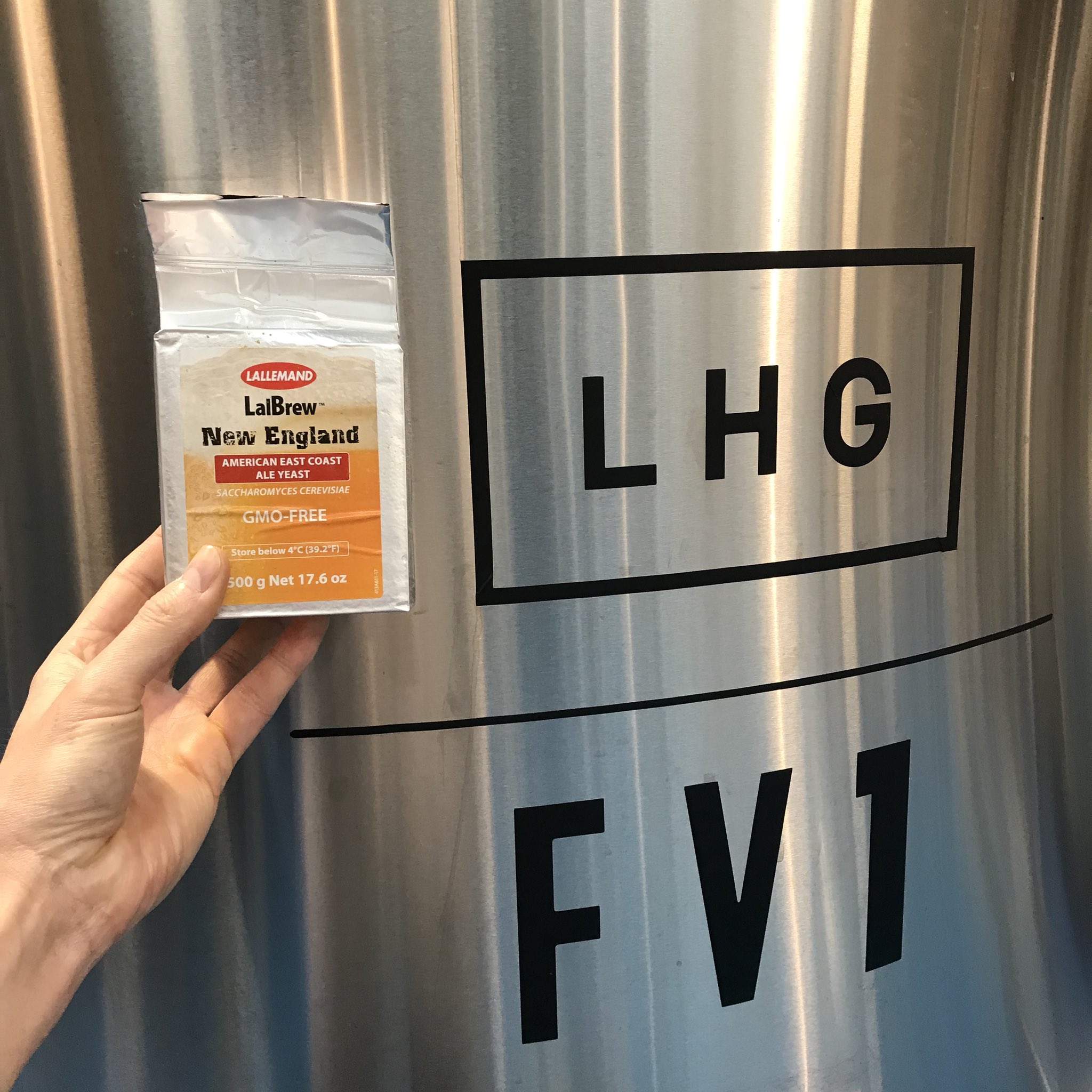mrodrigues9
Active Member
- Joined
- Jun 15, 2016
- Messages
- 35
- Reaction score
- 12
Anyone ever use Windsor dry yeast on a NE IPA?

no, but this might be available soon.....

posted by Verdant on their twatter page






![Craft A Brew - Safale S-04 Dry Yeast - Fermentis - English Ale Dry Yeast - For English and American Ales and Hard Apple Ciders - Ingredients for Home Brewing - Beer Making Supplies - [1 Pack]](https://m.media-amazon.com/images/I/41fVGNh6JfL._SL500_.jpg)









Or just buy S-04 from Fermentis for half the price... :rockin:
I haven't yet, but my current plan is to pitch one pack of Windsor and one pack of S-04. I'll probably just rehydrate them together. Thinking of fermenting at 63 degrees F.
I've modified my thinking on this. Revised plan is to pitch 1/3 Fermentis S-O4, 1/3 Danstar Windsor, and 1/3 Danstar Munich Wheat. And to ferment at 64 degrees. Trying to introduce some POF+ genetic characteristics.
Wish I could get my hands onto some of that Danstar Lalbrew New England though...
I would use the Danstar Munich Classic, which is the W68 strain. ( there is a thread on this forum regarding it )
^Sarcasm^? I didn't get that impression...
How can the Danstar New England stir up enthusiasm when it doesn't exist yet for the public, and there is no hint of it on their website, and search engines don't even come up with hits for it? That said, I'm enthused.
Indeed. http://www.lallemandbrewing.com/product-details/lalbrew-new-england/
When it shows up at my lhbs I'll give it a try on half a 10 gallon batch and compare it to either Conan or 1318...
Cheers!
The "Vermont" yeast aka "Conan" is supposed to be the yeast Boddingtons used in the 80s which was discovered to be Nottingham when one of the original brewers was tracked down and asked. When I used it in my NE IPA I got the same peachy apricot aromas. Which brewery was using Windsor originally?
I tried to mention Nottingham over on the gene sequencing thread, and I was ignored.
Justin Bieber and Usain Bolt share certain stretches of DNA such as a Y chromosome
In Lallemand’s Standard Conditions Wort at 20°C (68°F) LalBrew™ New England yeast exhibits:
Fermentation that can be completed in 7 days, a bit slower than most ale strains. This is a normal and perfectly natural characteristic of this strain.
Medium to high attenuation and Medium flocculation.
Neutral to slightly fruity and estery flavor and aroma.
The optimal temperature range for LalBrew™ New England yeast when producing traditional styles is 15°C(59°F) to
22°C(72°F).
Lag phase can be longer when compared with other strains, ranging from 24-36 hours.
I've brewed NEIPA's with windsor, london esb, so4, us05, nottingham and a house wet yeast. Biggest drawbacks with windsor (worse) and london esb (marginally better) is the lack of flocculation, it'll look like milk (which is fine) but without significant fining/cold crashing efforts can throw yeast in the glass on serving (which is not fine). Windsor can be done in under 36 hours and london esb under 58 which for me translates to needing great temperature control as the temperature rockets.
I prefer the flavour of windsor over london esb and without significant simple sugars windsor doesn't like finishing below 12 (but is reliable) and the london esb usually stops at between 14 and 16. The trick with these is to make sure a relatively large portion of extract come from sugar to avoid the high FG, it will ferment dry and don't try to mash high or bring anything like crystal to the mix to avoid beer which finishes at 20+!
so4 and us05 just do the work and are relatively neutral, nottingham and our wet yeast (hales/gales derived strain) also reliable, but not so neutral. All will easily drop clear given adequate handling though nottingham can produce a slightly tart finish and our wet yeast a dry (overtly bitter) minerally (sessionable) quality neither work quite as well as the slightly sweet and fruity windsor. Windsor (lesser extent) and london esb (much more) seem to smell strongly sulphurous immediately after fermentation though this clears up. I would be interested to compare the new NEIPA yeast, but would be unlikely to use london esb again over windsor.
I tried a neipa yesterday made with the new lallemand neipa yeast and meh, i was expecting a ton more. Neutral if anything slightly alcoholic but thats it. And i know the brewer tried to get those esters going.... I think its a miss.